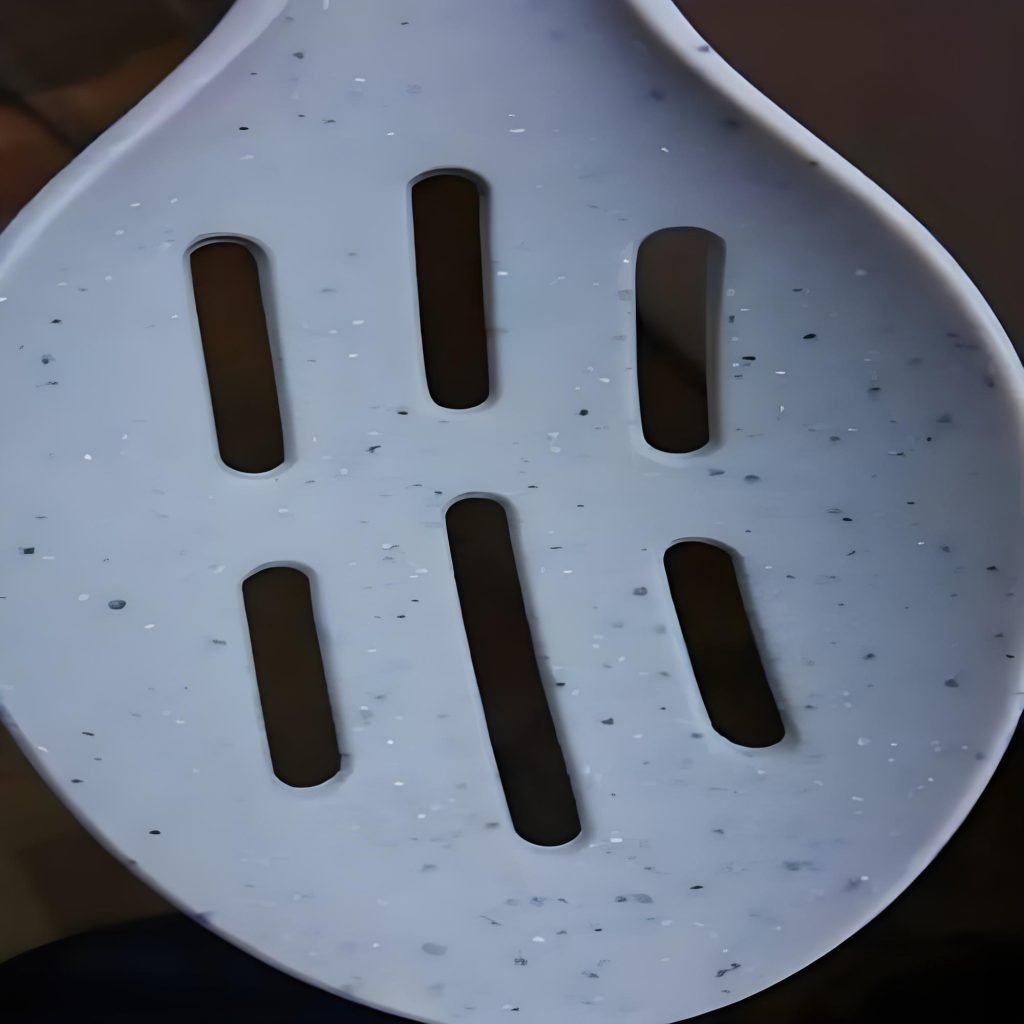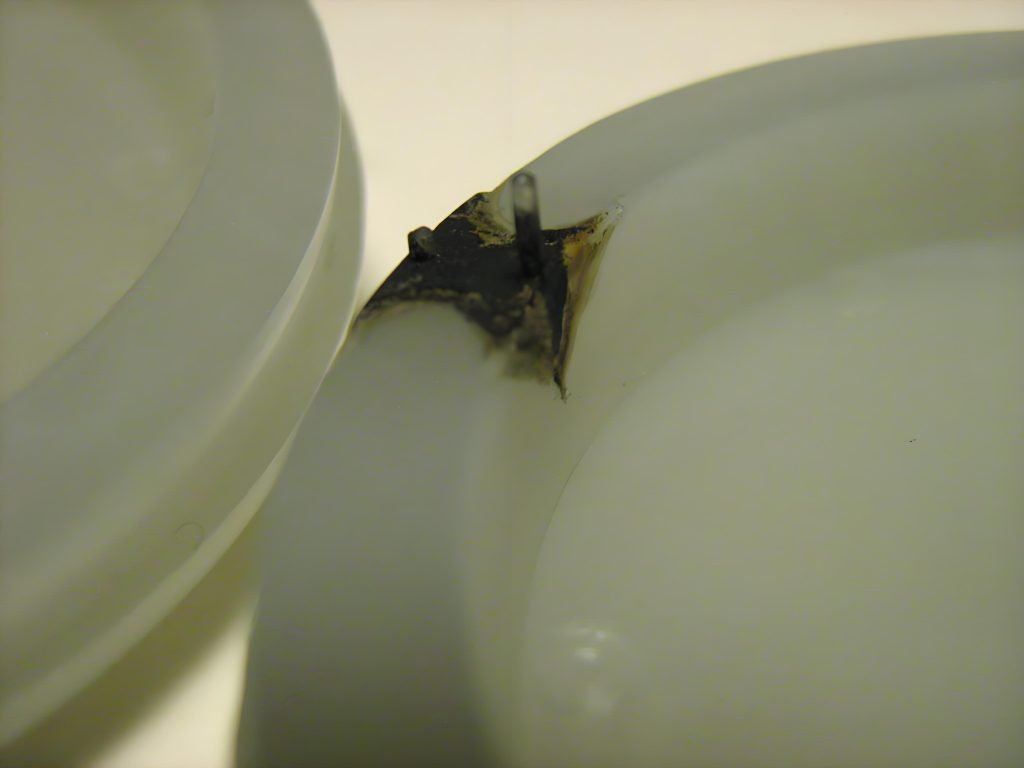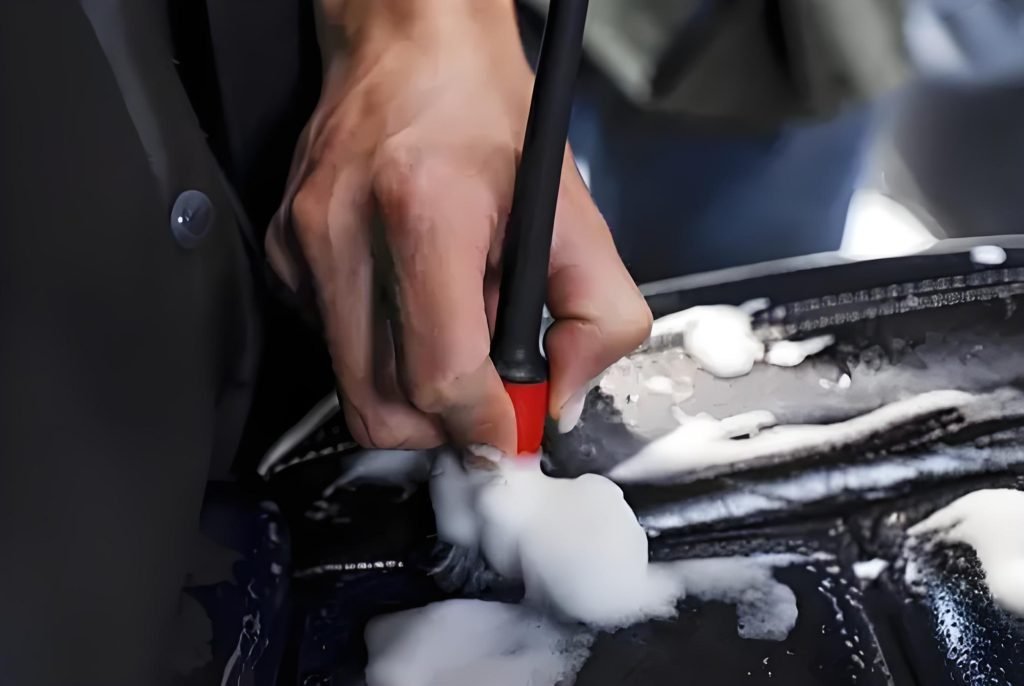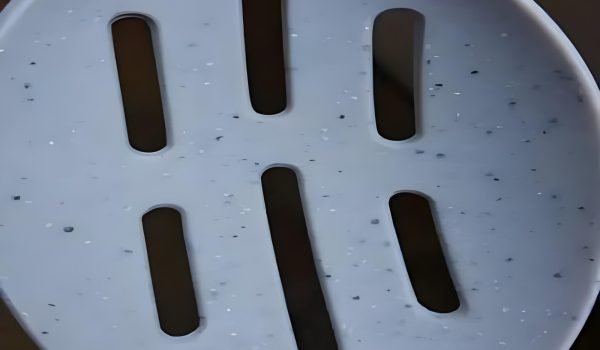Those dark flecks in transparent syringe barrels? They’re carbonized plastic particles or contaminants—burnt resin, metal flakes, or lubricants—embedded deep in the material. Far from cosmetic, they signal process failures: overheated resin in dead zones, contaminated regrind, or machine wear. Each black speck threatens structural integrity, chemical resistance, and sterility.
For engineers, they’re ghosts in the system—easy to spot but hard to trace, whether from charred residue, worn screws, or mold grease. Solving this isn’t about quick fixes; it demands full process control over molding’s entire ecosystem.
What Are Black Specks In Injection Molded Parts?

Black specks injection molding parts are those small, unwanted dark spots you sometimes see on the surface or trapped inside plastic pieces. They look like tiny dots or streaks, anywhere from brown to deep black. These aren’t just an appearance problem. They happen when something goes wrong during the molding process, like the plastic material getting too hot and burning a little, or when small bits of dust, dirt, or degraded plastic accidentally mix in with the clean material. They are tiny bits of impurity or burned plastic stuck in your part.
These dark spots can cause real issues. They might make the plastic weaker, less able to handle chemicals, or simply look bad and inconsistent. Especially if the parts are used for medical supplies or food containers, having these foreign bits trapped inside raises contamination concerns. So, preventing injection molding black specks involves careful control over things like material temperature and purity, and making sure the equipment is clean and running smoothly. Good injection molding avoids letting the material overheat or become dirty in the first place.
What Makes Black Specks Appear on Molded Plastic Parts?
Black specks in injection molding come from two main problems: plastic burning inside the machine or dirty stuff mixing with the material. These dark spots happen when small damaged particles get stuck in your plastic part during production.
Material Breaking Down
Plastic overheats when temperatures run too high in the machine barrel. This happens especially near the front or nozzle areas. When plastic cooks too long – maybe because production stopped but the heater stayed on–it turns brown or black like burnt food. Recycled plastic flakes sometimes survive the heating process only to break apart later, leaving dark specks. Scratches inside older machines trap plastic that bakes for hours, creating crumbs of burnt material that flake off into new parts.
Contamination Troubles
Dirt gets into the plastic material from different sources. Regrind material might contain dust from storage areas or charred bits from previous overheated batches. Tiny metal flakes can wear off screws or barrels over time. Airborne dust near machines can settle in open material bins. Lubricants like mold release spray or grease from moving parts accidentally transfer to plastic surfaces. Even leftover plastic residue from previous production runs can mix in and show up as discolored spots when switching to lighter materials.
Processing and Design Issues
Venting problems occur when trapped air inside the mold becomes so compressed it gets hot enough to burn nearby plastic – mechanics call this “the diesel effect.” Thin walls make plastic flow faster under high pressure, creating friction heat that discolors the material at those weak points. Oversized machines make matters worse since less material stays in the barrel longer between shots, increasing chances for gradual burning near heater bands.
These causes rarely happen alone. Usually, black specks appear when two or three problems combine, like overheated material meeting dirty regrind in a poorly vented mold. Fixing them requires careful inspection of both equipment condition and material handling practices from storage to production.
How to Solve the Black Specks on the Injection Molded Products?

Managing Raw Materials Properly
Black specks often originate from contaminated plastic. Dust accumulation on resin pellets in open containers or recycled material containing burnt particles can introduce defects during melting. Implement these best practices:
- Store materials properly: Keep resins in sealed containers to prevent airborne contamination;
- Dry hygroscopic resins thoroughly: Moisture creates steam in the barrel, leading to material degradation and carbonization;
- Segregate rejected materials: Never reprocess defective parts (containing specks) into production runs unless manufacturing black products;
- Monitor material transfer points: Regularly inspect areas where material changes occur to prevent cross-contamination between batches or colors.
Proper raw material management prevents black specks by eliminating contamination sources. Sealed storage blocks airborne particles, thorough drying avoids resin degradation, and strict material segregation maintains purity. This approach preserves plastic quality during processing while minimizing defective outputs, ensuring cleaner molded products and reducing material waste.
Keeping Machines Clean and Functional
Burnt residues accumulating in equipment corners cause recurring speck issues. Develop monthly screw extraction routines – fine scratches along screw flights trap carbonized material that flakes off intermittently. Professionals prefer chemical purging over mechanical scraping; harsh scraping tools actually worsen groove depth.
Check nozzle tips regularly for discolored buildup; this area suffers the hottest temperatures. Monitor barrel temperature sensors for calibration drift – faulty readings lead operators to unknowingly overheat material. Mold components require equal attention. Worn ejector sleeves leak lubrication oils that smear onto part surfaces as oily streaks. Implement strict cleaning schedules using industrial alcohol wipes and low-residue lubricants. Never neglect vent maintenance; impacted vents trap combustion gases that char resin through the diesel effect.
Balancing Process Conditions
Lowering barrel temperatures alone won’t fix specks. Focus instead on reducing shear heat—the friction that scorches plastic when injection speeds run too high. Slowing fill rates eases material stress near gates, much like easing pressure when sanding wood. Screw rotation speed needs similar control. High backpressure grinds pellets against barrel walls, generating unnecessary heat. Match machine size to part volume. Oversized barrels force small material amounts to linger near heaters, degrading slowly like forgotten toast. For brief stops, keep barrels at safe temperatures; for long halts, purge all melted plastic to avoid carbon buildup.
Optimizing Mold Design and Care
Mold flaws indirectly create specks. Poor venting causes “diesel effect” burns, while misaligned sections let material accumulate and char. Design vents carefully—too shallow and gas stays trapped, too deep and flash forms. Place additional micro-vents where the melt flow ends, especially for complex shapes. Clean parting lines routinely to remove mold release agents or rust preventives. These coatings carbonize under heat, leaving smudges on parts. For existing molds, consider professional resurfacing to eliminate microscopic pits that harbor contaminants.

Salvaging Affected Products
When black specks slip through, specialized nano-sponges offer repair. These dense foam tools buff surface flaws without altering textures—ideal for medical or optical parts where looks matter. Unlike sandpaper, they remove minimal depth, preserving precise dimensions. Remember, though: this fixes symptoms, not root problems. Lasting solutions rely on watching material purity, machine health, and process harmony.
| Focus Area | Critical Actions | Avoidance Targets |
| Material Control | Sealed storage, Regrind filtration, and Moisture monitoring | Dust intake, Wet processing |
| Machine Health | Screw inspection schedules, Nozzle temperature checks | Worn components, Hot spots |
| Process Flow | Shear reduction, Proper machine sizing | High-pressure injection |
| Mold Integrity | Strategic vent placement, Cavity polishing | Combustion traps, Residue buildup |
| Recovery Options | Nano-abrasive correction, Texture matching | Mechanical abrasives |
Conclusion: Delivering Flawless Surfaces Through Precision Control
Black specks vanish only through total process mastery—a harmony of pristine materials, flawless equipment, and intelligent processing that few achieve. At Fecision, we make this trifecta routine. Our engineered solutions go beyond reactive fixes, embedding prevention at every stage of injection molding:
- Material Science: Traceable resin tracking eliminates contaminants at source
- Machine Excellence: Micron-level inspections catch wear before it matters
- Smart Processing: Real-time rheology monitoring stops degradation at the molecular level
When deviations occur, our adaptive control system doesn’t just warn – it auto-corrects, instantly adjusting parameters to maintain perfection. This isn’t just quality control – it’s quality redefined. Discover flawless molding solutions >>
Discover how our integrated methodology transforms black speck challenges into competitive advantages. Visit Fecision for case verification reports and technical white papers detailing our zero-tolerance protocols. Let us prove why global manufacturers entrust their most demanding projects to Fecision: where scientific rigor meets manufacturing excellence, part after flawless part.




